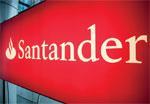Banks have not had an easy time in recent years. Barely a week has gone by without headlines about shareholder revolts, bailouts or customer complaints. Even those that seem to be weathering the storm relatively well, as Santander UK appears to be doing, face continuing challenges because of the economic climate.
As a relative newcomer to the UK banking scene, Santander is focused on establishing a strong name in the market.
Elliot Rees-Davies, head of reward at Santander, says: “I think how we position ourselves in the marketplace is becoming more important. The scandals [there have been] since 2008 with the financial crisis are putting significant pressure on all the banks. Santander has come in, taken over Abbey, Alliance and Leicester, and Bradford and Bingley, and is trying to make a name for itself on the high street. So a lot of [our focus] is around culture and becoming the best bank to work for, the best bank for our customers and the best bank for our shareholders. That is the strategy we are building.”
Reward and benefits have a key role to play in embedding the organisation’s desired culture and set of values, currently in development, which will underpin this. The reward team has therefore had to consider some fundamental questions.
Tim Robertson, senior reward manager, says: “The biggest challenge has been to define what being the best bank means. It is a very easy phrase to throw around, but the challenge for us, as it comes back to the reward strategy, is what does that mean and what does that look like?”
Addressing these questions and ensuring that the bank’s reward strategy underpins its desired culture, as well as its business strategy, has resulted in a busy year for Santander UK’s reward team. This month, it is due to launch the first phase of two major reward projects, both of which are significant departures from previous strategies.
One, which will bring a fundamental cultural change for both employees and managers, is a greatly simplified pay framework and job families structure. The bank’s acquisitions had seen it accumulate 45 different job families and 1,200 pay ranges. Not surprisingly, it was keen to simplify these into a much clearer structure comprising just 12 job families.
Robertson explains: “What we wanted to do was reposition how an employee fits within the organisation; to strip our whole framework down to a very simple and straightforward approach, so it is very clear. An employee in any part of our organisation can look and see where they sit and where they fit.”
Identify career paths
This is intended to make it easier for staff to identify potential career paths, as well as for the organisation to manage its talent better.
Under the new framework, managers have a bigger role to play in identifying where employees under their remit fit in terms of job role and pay levels.
“The cultural shift around this simplification and what it brings has been the biggest challenge for this project,” says Robertson. “We are starting to get into educating managers and training them how to make different decisions, and that is quite new from a reward perspective.
“That is not to say they didn’t make decisions, but, ultimately, the performance management decision drove everything else. The new pay framework reall needs them to think about the distribution of their employee population in those simpler salary ranges, and have conversations with them about mobility and what their next job is. These are things the previous structure didn’t really encourage.”
The reward team will work with managers to provide guidance and, where appropriate, challenge them as they make these decisions. “We are not just going to provide them with a lot of information in one hit and expect them to get everything right,” says Robertson.
The team will begin distributing information to managers and making staff aware of the new framework from 1 November, before it comes into effect on 1 January.
Santander’s other new HR and reward initiative, the launch of an HR portal, will play a key role in this communication activity. The portal, provided by Grass Roots, also includes a flexible benefits scheme, which will bring the bank’s benefits package more into line with those of its competitors.
Stated ambition
Stephen Gambles, senior reward manager, says: “We see many of them have fairly established flexible benefits schemes. When we have a stated ambition of being the best bank to work for, we need to at least match them as a starting point. We are not kidding ourselves that this is the end of the road and that we’ve done everything we need to do. ‘This is getting us to the starting line’ is a phrase we have used quite regularly.”
Having set out to implement flex, the project evolved quickly, says Gambles. “We took it away from just being about flexible benefi ts and we started talking about our employee value proposition.”
The portal will include all elements of the company’s HR, from career development and performance management to reward, benefits, and employee health and wellbeing. It is branded in line with its global employer brand, Santander Is You, and content is divided across four sections: Welcoming You, Developing You, Supporting You and Rewarding You.
Rees-Davies says: “We have tried to put ourselves in the shoes of the employee and are trying to make things as easy and accessible as possible.”
The flex scheme is a significant shift from Santander’s previous benefits, a traditional-style package that offered employees little choice. Through flex, staff will be able to access almost three times the previous number of benefits, which they will fund by levelling down cover of existing benefits and via salary sacrifice arrangements. “We are not going down the classic route of providing a separate flex pot funding because we match the market on a total compensation basis, so we have kind of already accounted for it,” says Gambles.
HR portal launch
The HR portal will launch in phases, but in quick succession to maintain momentum. The first phase, which will see the portal go live with static content about its main areas, will take place on 1 November. This will be followed by the launch of online total reward statements and snapshot pension and share scheme statements on 7 November to help staff understand what they receive. Between 14 and 30 November, employees will be able to select benefits during the flex election window. These will come into effect on 1 January 2013.
Gambles adds: “I expect there to be extremes [of responses]. There will be some people who absolutely hate it because it really challenges their perspective and their view of how things are done here. There will also be some people who love it. My hope is that category B outranks category A.”
The portal has a number of advantages for Santander, not least in terms of the data it can provide about employees, enabling it to take a more proactive approach to communication. For example, if an employee is due to go on maternity leave, this will be flagged to the HR team, who will be able to contact the individual and their line manager with the relevant tasks they need to complete. “That will give us an opportunity to leverage this platform and put us a step ahead,” says Rees-Davies.
But these new initiatives and programmes are only the first part of a far-reaching strategy, and Santander’s reward team is already looking to the future. For example, in its second phase, the new pay framework and job families will support employee mobility both within the UK and globally. Rees-Davies says: “We are trying to get into a space where we proactively manage talent, proactively look at people’s careers and then look at them themselves, so we get those talent moves for the sake of the business and the sake of the individual.”
Plans are also under way to evolve the flexible benefi ts scheme for its second year. While the reward team already has some ideas of what it would like to see, employee feedback post-launch will also help to shape the scheme.
But, ultimately, ensuring the bank’s reward strategy supports employee performance is key. Rees-Davies says: “It is there to underpin the business strategy, so business performance is key. We are not a failing bank, but clearly we need to keep an eye on that while everything else is going on around us.”
KEY BUSINESS CHALLENGES AFFECTING BENEFITS
- The current banking environment and economic climate.
- Changing legislation.
- Positioning the bank as the best for employees, customers and shareholders.
- Building a culture and values to underpin and support this.
CAREER HISTORIES

Elliot Rees-Davies, head of reward at Santander, began his career in reward consultancy with organisations such as Arthur Andersen, Ernst and Young, and Watson Wyatt. He then moved to an in-house role at Lloyds TSB (now part of Lloyds Banking Group), where he spent three years as head of benefi ts and share schemes. From there, he moved to Aviva as head of reward, before joining Santander a year ago.
Rees-Davies cites one of hisgreatest career achievements as the harmonisation programme he oversaw at Aviva. But he says the two projects due to go live at Santander will eclipse this.
Tim Robertson, senior reward manager at Santander, is responsible for the cash compensation elements of the bank’s reward package. He has worked in reward for 15 years, covering all types of reward, benefi ts and executive remuneration, although he has worked primarily with cash compensation in recent years. He has worked for organisations such as Ericsson, GlaxoSmithKline (GSK), American Express and Barclaycard. Robertson has been in his current role for two years.
He is most proud of his work at GSK after the merger of SmithKline Beecham and GlaxoWellcome in 2001, when he was involved in designing and delivering new salary and bonus programmes, as well as global total reward masterclass sessions.

Stephen Gambles, senior reward manager at Santander, is responsible for all non-cash benefi ts at the bank. He began his reward career in 2000 when he joined PricewaterhouseCoopers’ internal reward team. After fi ve years, he moved to AAH Phamaceuticals, before joining Alliance and Leicester. He was there when Santander acquired the business, but left to spend 18 months with Alliance Medical, returning to Santander in June 2011.
Gambles cites his work since returning to Santander as his greatest career achievement. This includes the introduction of car schemes, which won this year’s Employee Benefits Award for ‘Most effective travel strategy for business and perk car drivers’.
THE BENEFITS
Pension
> Defined contribution (DC) scheme with service-related contributions. In the first year of employment, if an employee contributes 8%, the organisation will contribute a maximum of 10%. Employer contributions increase by 0.5% with each year’s service to a maximum of 12.5% after five years.
Healthcare
> Private medical insurance available through flex.
> Dental cover available through flex.
> Health cash plan available through flex.
> Health assessments.
Group risk benefits
> Life assurance available through flex.
> Critical illness insurance available through flex.
Share schemes
> Three- and five-year sharesave schemes.
> Share incentive plan (Sip) offering partnership shares.
Holiday
> Entitlement based on employee grades.
> Maximum of 30 days available for senior managers or directors.
> Staff can buy or sell up to five days a year.
Voluntary benefits
> Bikes for work.
> Childcare vouchers.
> Home computers.
> Employee discounts.
> Charity lottery.
> Payroll-giving scheme.
> Change for charity initiative.

SANTANDER AT A GLANCE
A long way in eight years Santander entered the UK banking market in November 2004, when the Spanish group’s acquisition of Abbey was approved. Its acquisition activity continued in 2008, when it took over Bradford and Bingley’s retail branches and savings business, and Alliance and Leicester. These businesses were subsequently rebranded in 2010.
As at June 2012, Santander UK operated 1,312 branches and employed more than 25,000 staff.
For the six months ended 30 June 2012, Santander UK’s pre-tax profit stood at £725 million, a 32% increase on the equivalent period in 2011.
Santander UK is part of the Santander Group, which was founded in Spain in 1857. The group now has a presence in 10 markets in Europe, and North and South America, employing about 193,000 staff globally.
Case study
Claire Stevens is a tax accountant at Santander, which means she is responsible for responding to queries on employment and occupational taxes.
One of her favourite benefi ts from Santander also has a tax focus, because she particularly values its bikes-for-work scheme. “This enabled me to purchase a bike at a discounted rate and spread the cost over a 12-month period,” she says.
Stevens also values the range of discounts available from major retailers through her employer, and the choice these provide. In the past, she has used this benefit to purchase a theatre trip to London.
















